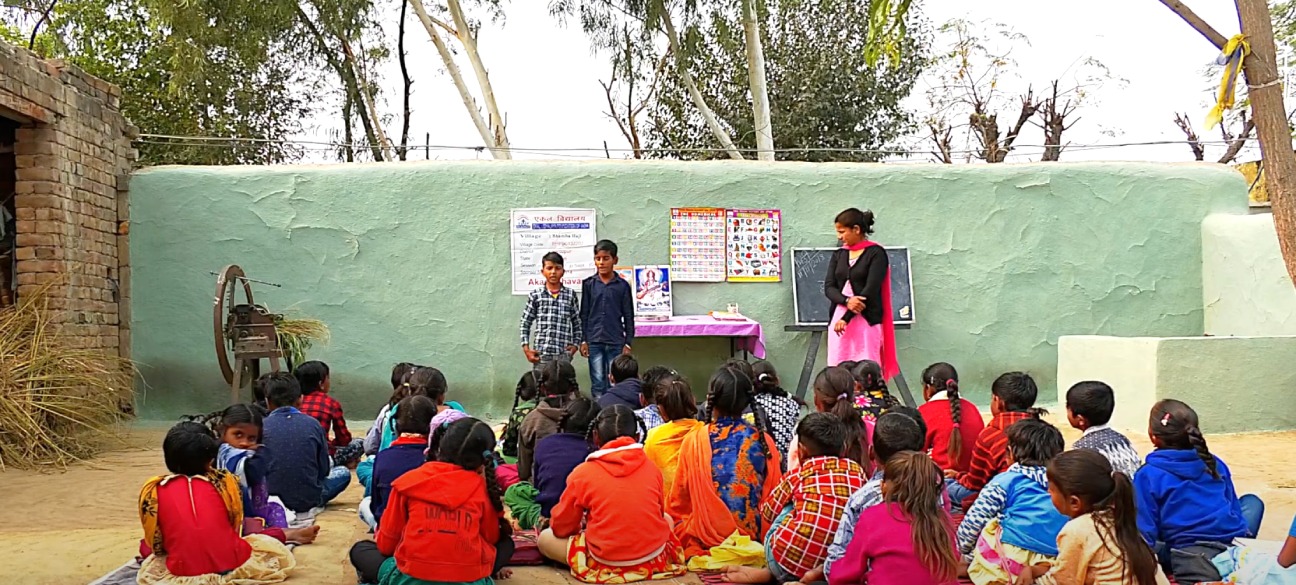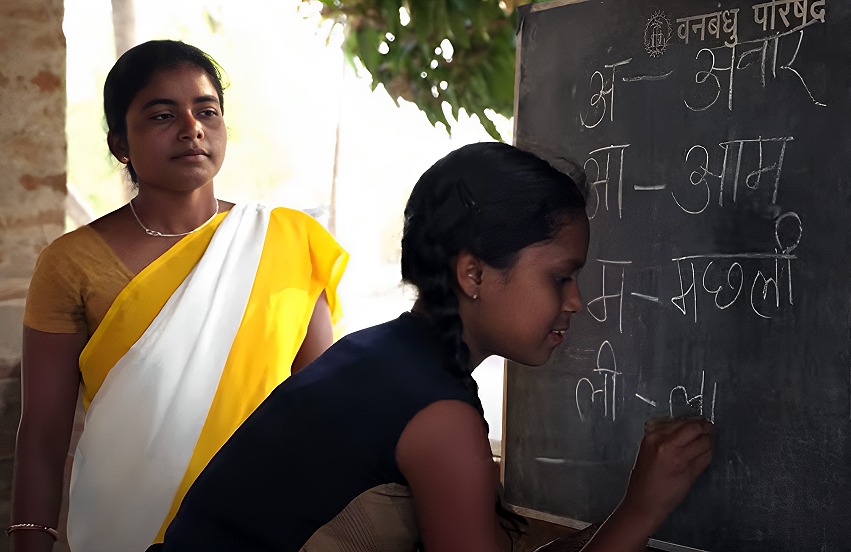While India is making giant advances in software, space, and nuclear power, it is paradoxically still struggling with basic literacy for a large segment of its population. At the time of independence, India’s literacy rate was a staggering 11%. Since then, it has made tremendous strides in educating its people. According to a 2011 census, the literacy rate has grown to 74.04%; however, this figure is still below the world average literacy rate of 84%. The RGI census data states that though the gap between the literacy rate in urban and rural areas is steadily declining, the divide still exists. The literacy rate among the urban population is 84.1%, while the literacy rate of the rural population is only 67.8%. The tribal/rural inhabitants live in remote areas, far from major cities. Those areas are highly deprived of basic amenities, modern facilities and even basic infrastructure, especially on the operational level. These areas are often non-reachable by road and hence neglected by development agencies. In this scenario, Ekal Vidyalaya Movement emerged as the most pragmatic solution to this National Need.
In late 1980s, children in rural & tribal India did not have many options of getting education. According to the census in 1981 only 38% boys & 25% girls in rural India between the age group of 6 to 10 years attended school. This is attributed to several reasons, such as the lack of interest in education, economic barriers, socio-cultural reasons, gender biases and non-availability of accessible schools as stated in the survey of 1986.

Rammurthi Committee Report played an important role in strategizing and setting directions for Ekal Movement. The committee pointed out that “the rural areas in general and the tribal areas in particular, have suffered in terms of resources, personnel and infrastructure facility. This phenomenon of regional disparities in educational development has acquired a major political dimension in the current Indian scene. It is reflected in the regional and sub-regional movements.
The committee emphasized that a piecemeal approach is no longer effective, stating, "No longer can isolated fixes suffice; what's urgently required is a grassroots Education Movement accessible to everyone, not just a select few."
Recognizing this imperative and motivated by the recommendations of the Rammurthi Committee Report, Ekal's founding volunteers began collaborating with rural and tribal communities. They drew inspiration from Swami Vivekananda's idea that if a child cannot attend school, then the school should be brought to the child.
Presently, Ekal Vidyalaya is a movement of over 1,01,417 teachers, 8,103 voluntary workers, 35 field organization across 26 Indian states, and 8 support agencies. It operates in over 80,000 schools and educates more than 2.8 million children at this time. Apart from its goal of achieving the national standards of Minimum Level of Learning, Ekal Vidyalaya seeks to empower the village community for its own self-development through five verticals of Functional Education, Healthcare Education, Development Education, Empowerment Education and Ethics & Value Education. The dedication of the donors, supporters, and full-time Sevavrati volunteers of Ekal Vidyalaya is the key to this Movement’s remarkable success.
Ekal's Role
Ekal had presented solutions to the many issues that were highlighted in the survey of 1986. Ekal first tackled the prime issue of lack of interest in education by introducing a joyful learning system which is a non-formal method of teaching. In terms of economic barriers, Ekal follows a low-cost model driven by volunteers. The Ekal schools' schedules are based on convenient hours recommended by Gram Samiti, allowing time to children for household economic activities and domestic chores to be completed. Lastly, Ekal brings the schools and teachers directly to the villages, overcoming the issue of inaccessible schools.
Despite the tremendous increase in rural children attending school after the Sarve Shiksha Abhiyan & RTE, there is continued need for Ekal schools as indicated in several reports of Ministry of HRD, Govt. of India on poor learning outcomes among rural & tribal children.
